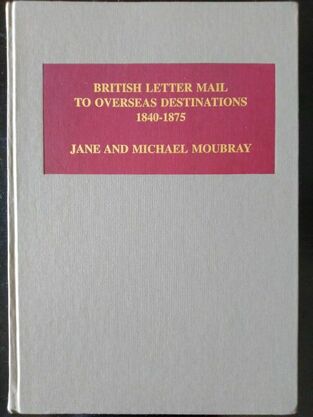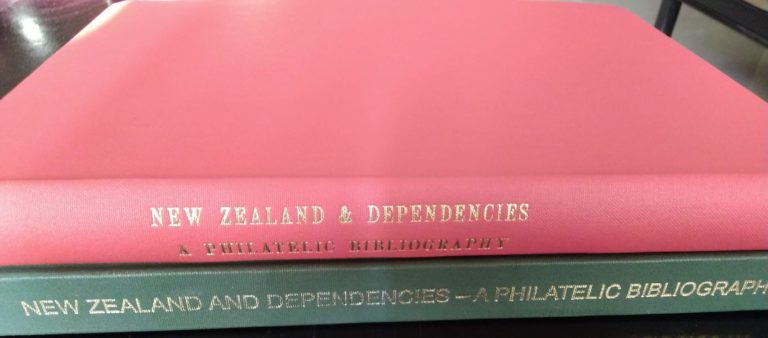It was sometime in 2012/13 that I started collecting Indian mails going to foreign destinations in the pre-UPU period. The comprehensive book on the subject is Col. D. N. Martin and Col. Neil Blair’s Overseas Letter Postage from India 1854 to 1876 but that covers only routes and rates and not accountancy markings on, well, the covers! As I struggled with making sense of the markings, I was trying to get hold of other books which would give me some insight.

So it was in Jan 2015 that I got in touch with an eBay seller who had a copy of Jane and Michael Moubray’s British Letter Mail to Overseas Destinations (Figure 1) on sale for £220. I later learnt that the seller was John W. Jackson, a well know philatelic literature enthusiast. I was not sure if this book* would help me and I requested John for more information. He explained that this was a standard book on 19th century British rates which had won the Crawford Medal and was quite popular with philatelists. The book was published in 1992 and had sold out within a short while and hence was rare and expensive.
At that point in time, the British dealer, Bill Barrell, had a copy for sale for £300 (which sold in the coming months). The German philatelic literature dealer, Phila Books or a.k.a. Burkhard Schneider, was willing to buy copies for €250 and later that year / early next he did list a couple of copies for €400 which sold quickly. Knowing that I was unlikely to find a cheap copy anytime soon and since John’s copy had sold in the meantime, I threw in the towel and bought a copy off another eBay seller for £215 + postage**
At the time of buying the book I had no idea that a second edition (Figure 2) was coming out soon. It was published by the Royal Philatelic Society of London in 2017 and met with good reception. It was priced at £75 for non-members and £68 for members.

While I ordered the second edition, I find that the first edition’s value is falling off the cliff over the past year or so. Obviously those who want a book for its contents would rather buy the second edition with updated information for a lower cost. And there are very very few new collectors of philatelic literature. So the demand-supply ratio has flipped 180 degrees. From £250-300, the average price is in double digits now. I have seen copies not selling for months at even £50-75!
Philately is a science or at least partly that. It follows that philatelic works are technical and similar to other pedagogical books where earlier editions have few takers. This is completely different from fiction or even many non-fiction works where first editions (rather first prints; the two words are often used as though they are synonymous but need to be distinguished) are desired. So unless a philatelic title is a valuable incunabula item your first editions are not worth much, both value and content wise.
* I now know that no one book helps and this is why I have had to assemble a jamboree of them even if most of them contain just a few pages of my interest.
** Never forget postage when buying literature. It cost me £28!







